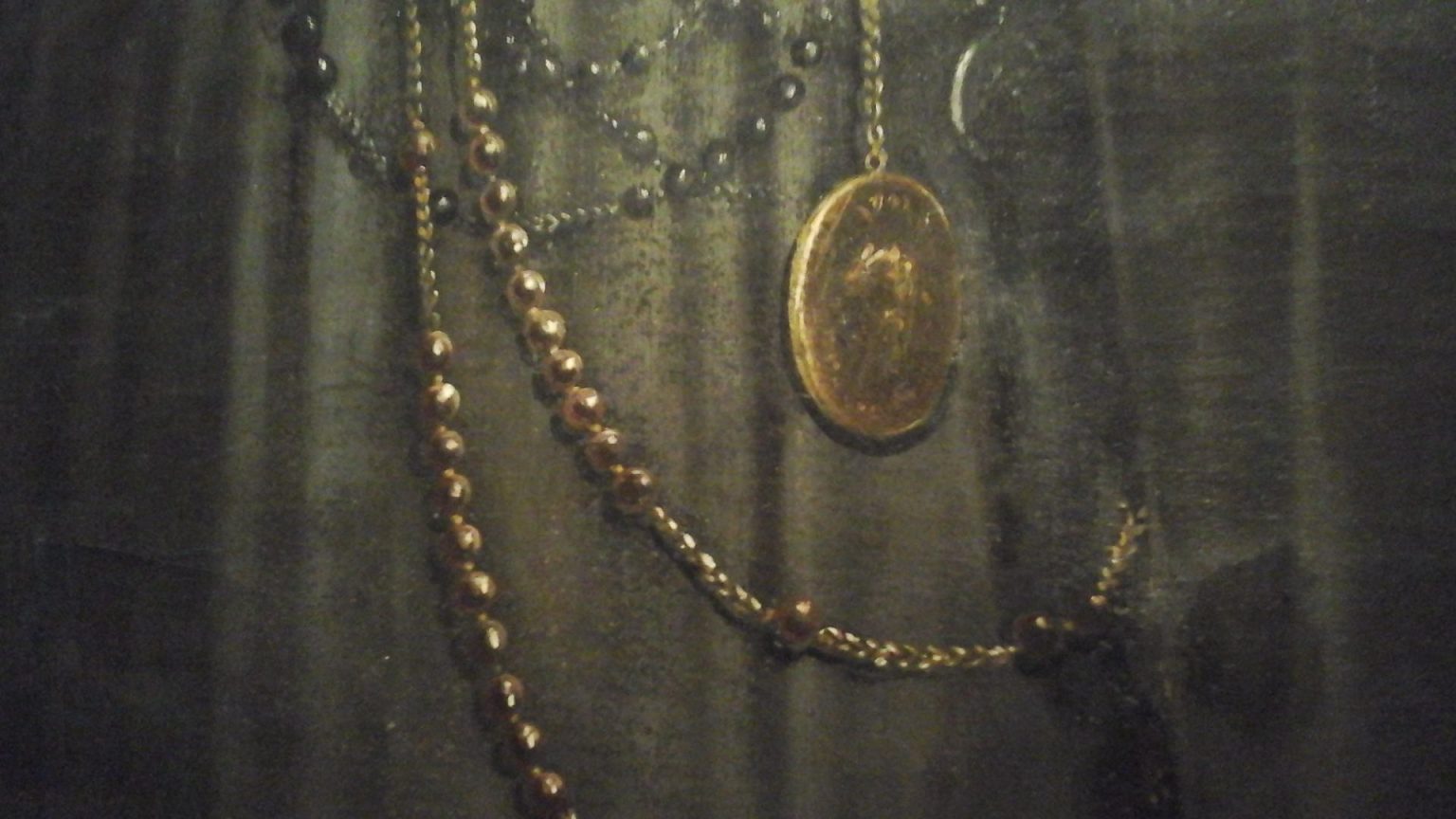This very large work depicts Saint Ignatius of Loyola praying and kneeling before a statue of the Blessed Virgin Mary, called Our Lady.
Inigo (Ignatius) was born to a family of lower nobility in the castle at Loyola in the Basque region of Spain, probably in 1491. He was the youngest of thirteen children. At the age of 7, his mother died. As for his father, with whom he had developed very strong ties, he died in turn when Ignatius was only 15 years old. He then became a page in the court of King Ferdinand the Catholic in 1506. A few years later, Ignatius was assigned the role of secretary in the service of one of his mother’s relatives, who was the general treasurer in the court of Queen Isabella the Catholic. In 1516, political circumstances drove him away from the court, and he entered the army. During the siege of Pamplona, Ignatius was wounded in the left leg while a cannonball broke the other. The doctors who operated on him could not prevent his right leg from becoming shorter than the other by several centimetres. He had to say goodbye to the army.
During his long recovery, he read a great deal, especially religious books. These readings encouraged him to completely reject his former life. He changed everything, in every respect, and adopted the life of a hermit, dedicating himself to Christian devotion, even asceticism. Having begun to write notebooks, he recorded excerpts from his readings in them. These texts would be called his Spiritual Exercises, like a kind of private diary, and would become the basis of Ignatian spirituality.
After a few years of pilgrimage, Ignatius of Loyola founded the Society of Jesus with his two friends, Francisco de Jasso y Azpilicueta and Pierre Favre. Priests who are members of this community are called Jesuits. The community was approved by Pope Paul III in September 1540. It was then abolished by the Papal Brief of Pope Clement XIV in 1773 following the expulsion of the community by several countries and their colonies. The Society of Jesus was then restored under Pope Pius VII in 1814.
Pierre Favre, the very first priest of the Society of Jesus, was canonized as St. Peter Faber in 2013 by Pope Francis. Ignatius and Francisco (St. Francis Xavier) had been canonized in 1622, the year of birth of Pierre Boucher.
As for the artist, Joseph Dynes, he was born in Burlington, Upper Canada (now Ontario) in 1825.
In July 1848, Dynes reportedly exhibited seven of his works during the 2nd (and final) exhibition of the Society of Arts of Toronto, formed the previous year by a group of professional artists and architects after Toronto had been without an official artistic organization since the demise of the Society of Artists and Amateurs in 1834. Although the event sparked the interest of a certain audience, collectors still valued European artists and remained reluctant to encourage local talent.
It may be for that reason that Dynes seems to have abandoned painting and, from 1849 to the fall of 1854, he worked as a portraitist in St. Catharines, near Niagara Falls.
As of October 1854, he could be found in Quebec City, where, over the years, he associated sometimes with photographers, sometimes with artists/photographers, or with artists/painters. Among his associates were the workshop of Earl Ellison et Cie, P.-A. Babin, Samuel T. McKenney, or Samuel C. Hawksett. With the latter, Dynes went to work in Quebec City from 1858 to 1861, then settled in Montreal until 1864. In 1863, with Hawksett, Dynes participated in the Exposition provinciale de Montréal, and they won first prize for painted photographs.
Upon returning to Quebec City in 1864, Dynes was employed to enhance the colours of photographic prints at Livernois’ studio. In 1866, Dynes would then become a portraitist and landscape artist at Archambault & McCorkindale, photographers.
During the year 1867, Dynes opened his own workshop on rue St-Jean, where he would gradually give up photography and even colour-retouched photography to devote himself entirely to painting.
Several of Joseph Dynes’ paintings can be found in museums in Ontario, one in Winnipeg, Manitoba, and a few in Quebec, including the Musée national des Beaux-Arts du Québec. The Musée Pierre-Boucher owns three works by this artist: this one, The Holy Family, and Pierre Boucher.
Joseph Dynes died in 1897.
Musée Pierre-Boucher Collection
1987 190 P


